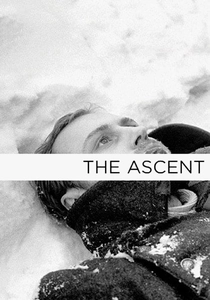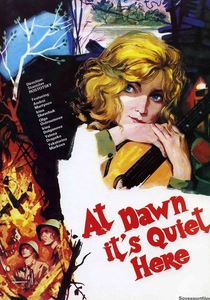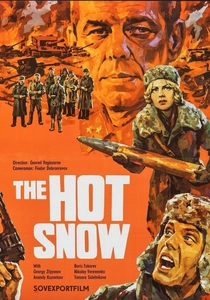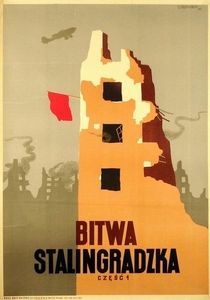Soviet cinema often explored themes of conflict, both internal and external, reflecting the political and social tensions of the time. This curated list of 10 Soviet films delves into the portrayal of enemies, offering a fascinating look at how adversaries were depicted in Soviet narratives. From espionage thrillers to historical dramas, these films provide a rich tapestry of stories that highlight the complexities of enmity and the human condition. Each film has been selected for its unique contribution to this theme, offering viewers a chance to understand the Soviet perspective on enemies through the lens of cinema.

The Ascent (1977)
Description: Set during WWII, this film explores the moral and physical struggles of two Soviet partisans against the backdrop of Nazi occupation, showcasing the enemy's inhumanity.
Fact: The film won the Golden Prize at the 10th Moscow International Film Festival.
 Watch Now
Watch Now

The Dawns Here Are Quiet (1972)
Description: This war drama focuses on a group of female anti-aircraft gunners defending their position against German forces, highlighting the personal and ideological conflicts between enemies.
Fact: The film was remade in 2015, showing its lasting impact on Russian cinema.
 Watch Now
Watch Now

The Hot Snow (1972)
Description: This film focuses on the Battle of Stalingrad, showing the Soviet soldiers' struggle against the German forces, highlighting the enemy's tactical and moral failings.
Fact: The film was based on a novel by Yuri Bondarev, who was a war correspondent during WWII.
 Watch Now
Watch Now

The Battle of Stalingrad (1949)
Description: A monumental epic about one of the most significant battles of WWII, it portrays the Soviet soldiers' fight against the German army, emphasizing the enemy's brutality and the Soviet resilience.
Fact: The film was made shortly after the war, capturing the raw emotions of the time.
 30 Days Free
30 Days Free

The Shield and the Sword (1968)
Description: This film follows a Soviet spy during World War II who infiltrates the German intelligence service, showcasing the classic theme of espionage and betrayal.
Fact: The film was one of the first Soviet spy thrillers and became very popular, leading to several sequels.
 30 Days Free
30 Days Free

Seventeen Moments of Spring (1973)
Description: A detailed portrayal of Soviet spy Stierlitz's mission in Nazi Germany, highlighting the intricate dance of espionage and the portrayal of enemies within and outside the Soviet Union.
Fact: It was one of the most watched TV series in the Soviet Union, with millions tuning in for each episode.
 30 Days Free
30 Days Free

The Red Tent (1969)
Description: While not directly about enemies, the film explores the international rescue mission of the airship Italia, showcasing how different nations can come together or clash in times of crisis.
Fact: The film features an international cast, including Sean Connery, and was one of the first Soviet-Italian co-productions.
 30 Days Free
30 Days Free

The Alive and the Dead (1964)
Description: This film examines the Soviet retreat in 1941, focusing on the internal and external enemies faced by the Red Army, including political commissars and German forces.
Fact: It was one of the first Soviet films to openly discuss the initial setbacks of the Soviet forces during WWII.
 30 Days Free
30 Days Free

The Fall of Berlin (1949)
Description: A propaganda epic depicting the final days of WWII, it portrays Hitler and his inner circle as the ultimate enemies of the Soviet people.
Fact: The film was heavily influenced by Soviet propaganda, aiming to solidify the image of the Soviet victory over fascism.
 30 Days Free
30 Days Free

The Checkmate (1970)
Description: A spy thriller set during the Cold War, it explores the cat-and-mouse game between Soviet and Western intelligence, showcasing the ideological enemies of the time.
Fact: The film was one of the first Soviet films to delve into the complexities of Cold War espionage.
 30 Days Free
30 Days Free









